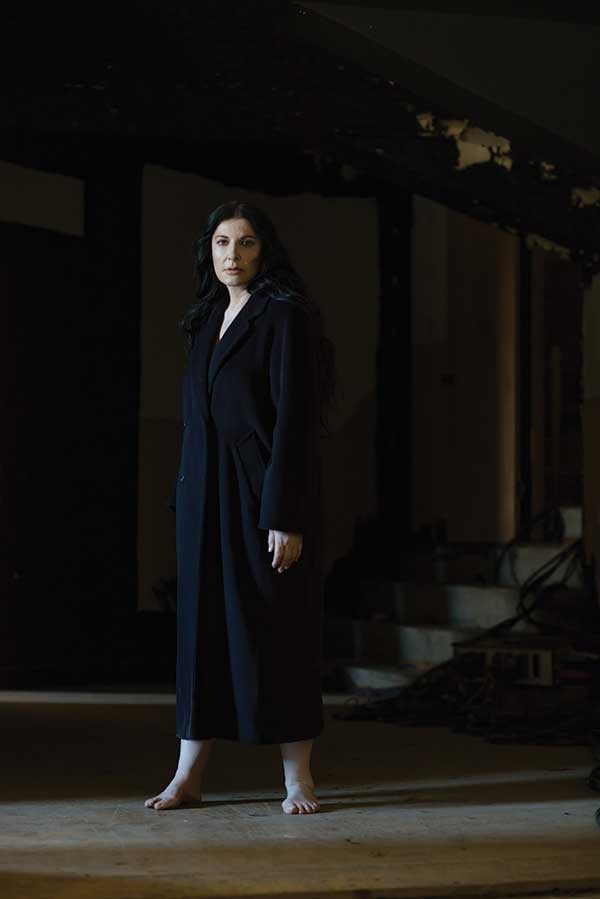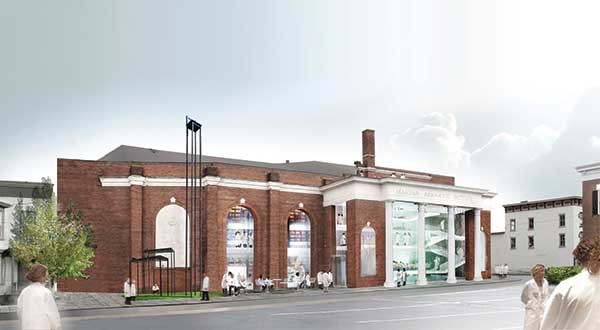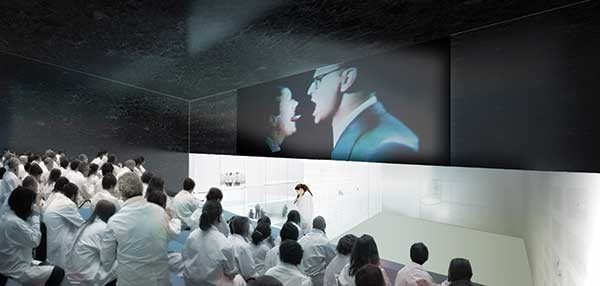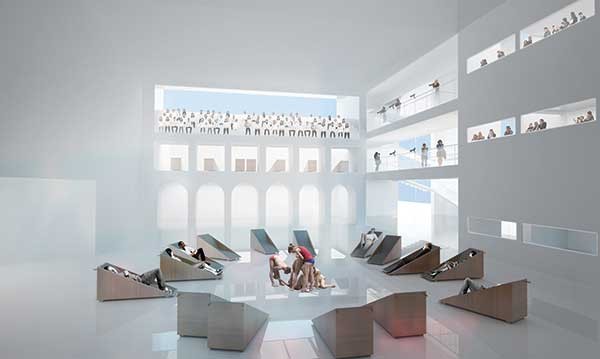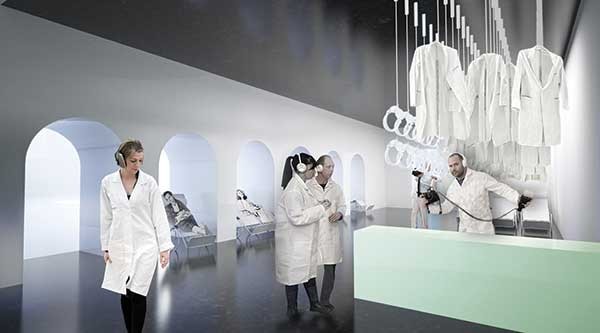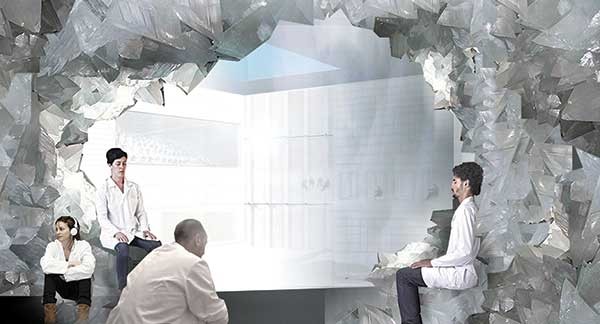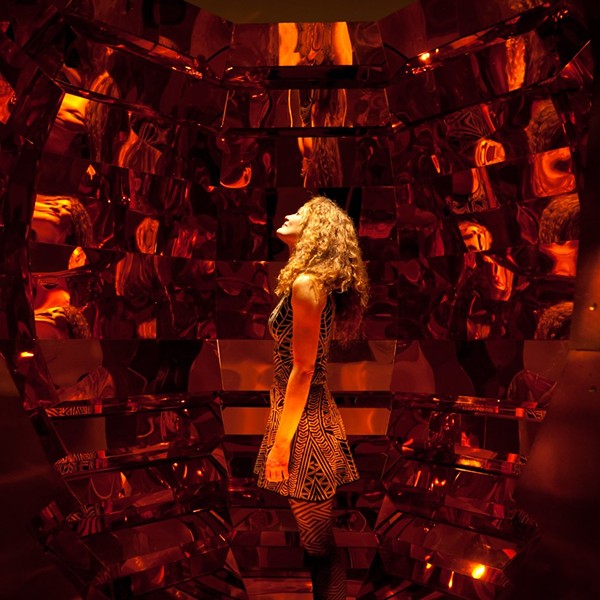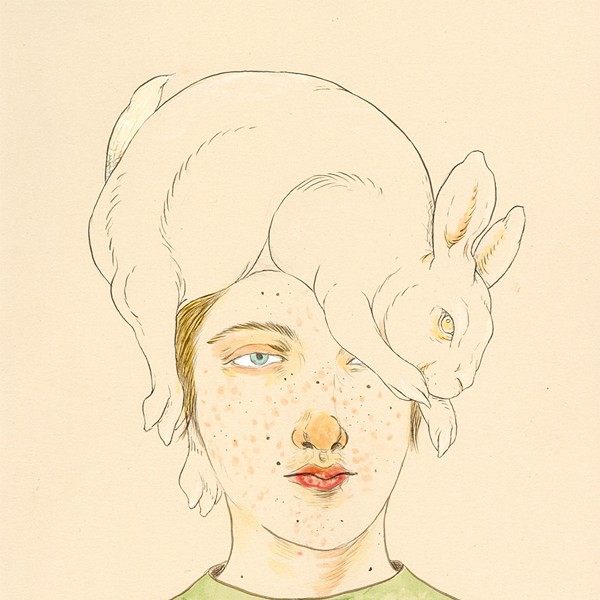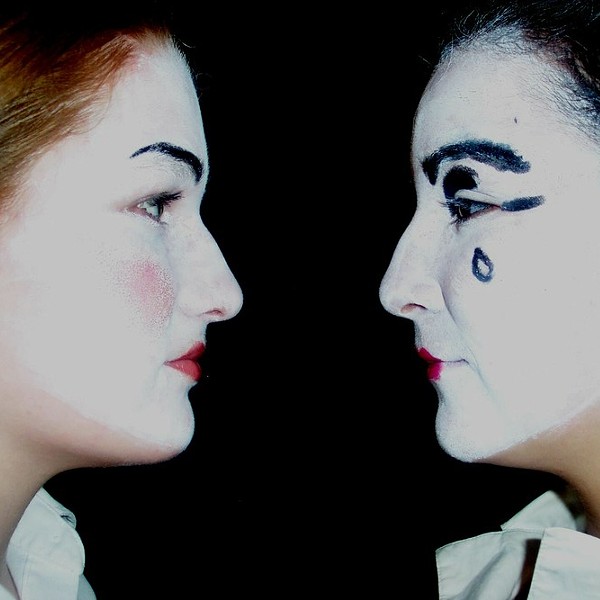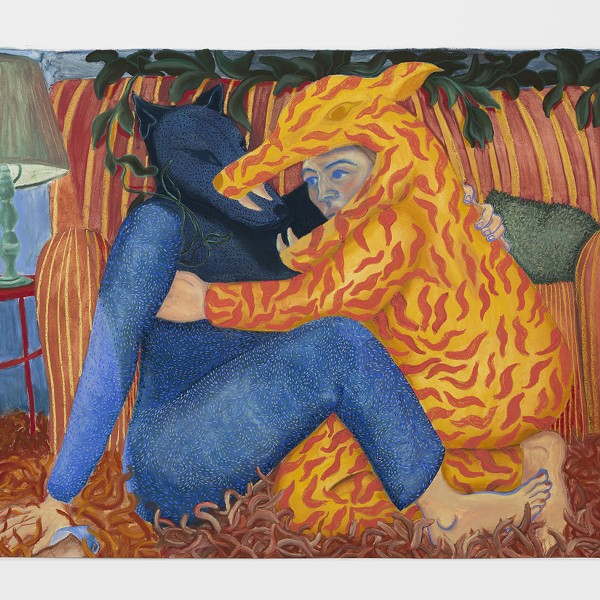Marina Abramovic is dying. No faster than the rest of us, but eventually the 66-year-old, undisputed, international queen mother of performance art will die.
In preparation, she's erecting a temple, here in Hudson, which she hopes will help her live forever. A monument to her method for creating long-duration ephemeral performances, the Marina Abramovic Institute will train both artists and audiences in how to experience her kind of performance.
Though she has had a long and celebrated career, the Yugoslavian-born Abramovic brought performance art as close to popular culture as it has ever come during her 2010 career retrospective at the Museum of Modern Art. During, "The Artist Is Present," she sat at a table in the main gallery for three months, as thousands of visitors waited in line for a chance to sit across from her and absorb her eye contact. It is said that her gaze contains an unnatural intensity, one that brought numerous attendees to tears.
With the retrospective over, Abramovic has now turned her eyes to the Hudson Valley and the strange legacy she plans to leave with us. In 2005 Abramovic bought a cavernous old brick building in the pleasantly art-saturated river city of Hudson. The old community tennis building lay dormant for some time, until 2012, when Abramovic announced the plans for the institute, to be designed and renovated by rock-star architectural firm OMI.
Since, local residents have grown ever more skeptical of her plans, especially as specific operational details have emerged.
Performances will last no less than six hours. A visitor will have to sign a contract, bound by their word to stay the duration. They will be given a lab coat and trained in how to be an art recipient. They will lie over crystals and relax for performances in designer wheelchairs. The audience will be observed themselves, from a second viewing level, and if they fall asleep during the performances they will be wheeled away to a designated sleeping area.
Hudsonians have continued to wonder if she can deliver on her multimillion-dollar promises and what terrors might befall the city if she succeeds. They may know the answers sooner than later, as she has raised over $600,000 via Kickstarter in phase one of the fundraising campaign for the MAI.
I met Abramovic at her six-pointed-star-shaped home in the northeast corner of Columbia County in early May. My visit had been forgotten in a heavily scheduled day of telephone interviews promoting the operatic stage play about her life, "The Life and Death of Marina Abramovic," starring herself and Willem Defoe at the Luminato Festival in Toronto. She had also slept in, she had guests, and the photographer Annie Leibovitz had spent the whole afternoon at the house the day before, dragging Abramovic through the woods and a freezing stream to shoot photos for a planned book on the Hudson Valley.
Abramovic ran down the spiral staircase breathlessly in a black robe, her hair in a white towel. "I'm so sorry," she said, holding her robe together. "My life is crazy, everything is crazy." She ran back upstairs to dress and I sat on the least uncomfortable of her low, color-form furniture and chatted with Serge Le Borgne, Abramovic's longtime galleriest and the new director of the MAI.
A half hour later, Abramovic reemerged and splashed down on the couch dressed in black, with a white undershirt. Her black hair now dry, she smelled of freshly applied makeup.
Marina Abramovic: The problem is, I'm doing this big piece in Toronto and I have to do interviews every half hour. I have no time in my life.
[To Serge:] Give me some nuts, can you please? I'm so tired.
Chronogram: Are you okay?
MA: No I'm not, I'm just working. Did you get coffee, tea—anything?
C: I had coffee on the way here.
MA: No, I mean here in this house? [To Serge:] Can you give him something, please? He's been working too, and it's not good. Yesterday I was shooting all these things."
C: When do you get to slow down?
MA: Never. When I die.
C: Everything seems to be about your death. The play is about your death—
MA: There's also the biography, When Marina Abramovic Dies [James Westcott, MIT Press, 2010].
C: The institute is also about death in a way, right? It's about what comes after you or, at least, what will be in the absence of you. Is your death on your mind a lot?
MA: Every day, every day. I think about death every day. I wake up in the morning thinking about death. This is what Americans don't do. You think you're immortal. And you think you're ever young, and this is the wrong culture. In my culture death is a part of life. And I think that is very important, because when you think about death every day you cut the bullshit away from your life. You just concentrate on how much time you have to do what is important.
And this is what I'm doing. I'm incredibly focused and I cut all the rest out. It's really like I'm a soldier. [Serge brings nuts.] Oh god nuts! Thank you.
C: Your performances seem to be about heightening sensations that we may not pay much attention to in life. In death, all that goes away. Are you trying to preserve those moments with the institute?"
MA: No, this legacy is about so much more. First of all, the history of art is full of three basic subjects: pain, suffering, and temporality—and life after death. So every artist is busy with this, because the moment you are born, you're going to die, and every single day is actually passage to death.
If you go to the East, the Balkans, the Middle East, India, China, this is such an important subject. The Sufis say that life is a dream and death is just waking up, and I think that that's something we have to think about, because we don't even know where life comes from.
C: So you're looking for the unknown?
MA: I was just talking to a scientist on the radio a couple days ago about the brain and I asked him, "What is the brain?"
He said we have no idea! It's such a big unknown thing. To me that's such a fascinating subject: to find out if you really have some good ideas and experiences in your life.
C: How will these ideas manifest themselves at the institute in Hudson?
MA: It's very important to me that I can actually articulate what I want to leave.
I'm going to be 67 in bloody November. It's a big period. You're in the last stage of your life. I don't know...well, it's not like you're in the beginning. The thing is: How can you put this all together in some kind of conclusion and leave that for the other generations so that they can benefit off it?
What we don't have in this society right now is time. We don't have time, and technology has absolutely put us in prison and we don't have any connection to ourselves.
The institute is a kind of tool to give a glimpse, even for a short time, to any person who wants to come, to experience something different, a different state of consciousness and then he can go back to his own life and do whatever he's doing and see how this experience can apply to his own life and to his own work, or not. That's what I want to do.
It's also a union between art, science, technology, and spirituality. So it's much larger than just performance. Performance is just my tool. I think that artists have to give unconditionally, whatever it is they give. That's their function in society.
C: Of all the places you've been, what drew you here?"
MA: I came to America because I did everything in Europe I could do. I did every museum you could possibly imagine, so I was thinking it's time to go to America.
Plus, America is such a disturbed society. I think it's good to be in places that are disturbed, because there is where you function the best. And New York is the worst! I'm rushing around like crazy! But, I understand that if I don't come to the countryside a few days and walk in the landscape, and climb in the trees, and swim in the rivers, I'm not going to make it. I really need this kind of place. And Hudson, to me, was such an ideal location, between Bard, Mass MoCA, Williams College, Hobart, [and] very easy to access from New York.
C: Many people in Hudson view you as a strange outsider. What do you know about the Hudson community? How will you address that perception?
MA: The community has to accept the institute. To me the only way is to reach out to the community.
I've already heard so many rumors that we are only getting money from the rich guys and we are just an exclusive thing, but it's not at all like that. I want to really raise the money by social media and totally by the people who want to be inside, not to have the jet set situation—that's what I hate. I don't want that. With rich guys you have to sell your soul, then they always want something more.
C: What have you learned about Hudson in recent years? It's a complicated town.
MA: I really like Hudson, the people are wonderful, but one thing that I see as a problem in Hudson that will be very interesting for me to solve is, I see very strong division between the poor and the rich neighborhoods. It's amazing, I don't even see the black people walking on Warren Street—it's like two parallel realities.
I'm working on this whole concept of how my institute will function in a way that will change and break these borders and what the institute should do for children's education.
This institute will not function if it's international and everyone's coming in from Switzerland or wherever. I have to first reach the community. Everybody in the community has to pass through the institute training and understand it themselves. Then they can actually be the ones that protect it and promote it.
C: How do you plan on reaching out to these communities?
MA: It's all about change. I am absolutely sure I can do this in Hudson—I will open my doors to these kinds of people and do workshops with them. Simple. I'm really shocked at how polarized it is. It's like two alternate realities and no one is going anywhere.
It's such a project. There are so many things to do. But I really want to start opening this year partially. I'm really lucky so many people believe in this project.
C: Where is your home now? Is this your home? It's an interesting place.
MA: Look at this house. Have you ever heard of it? It's a six-point star—every single space is a triangle. Nothing fits. My work is so much with stars. When I saw this house I could not believe it. It's like it was made for me.
For four years nobody wanted to buy it because it's so strange. For 30 seconds I saw it and I bought it. I thought: Oh my god, this is a dream.
C: It seems like you have very little time to be here between projects. You just got back from South America and you're off somewhere else tomorrow. When do you have any time to be introspective?
MA: I have no time in my private life; I have all my time in the performance. I don't have a private life to start with, I don't even have a private e-mail. I have no time for anything. I have decided that from now until I die I will just work, and that's it.
I just did three months in Brazil, working like hell, but it was the most wonderful thing, seeing all the places of power and shamanism and spirits. I'm making a huge film.
C: So, even more stuff about your death and the afterlife.
MA: Yeah, exactly. I wanted to know. And I tell you, the afterlife exists. because I saw it with my own eyes.







